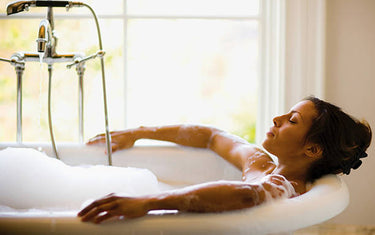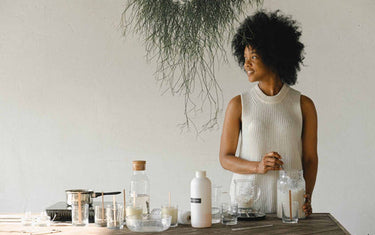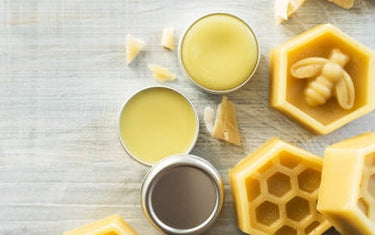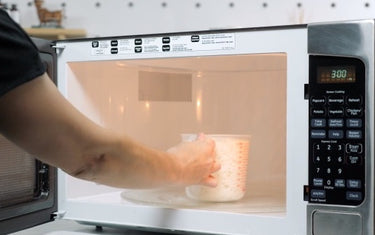4 min read / 24 May 2023 / Laura Garvin Gomez
How to Use Mica Powder for Wax Melts
Mica powder is a fantastic ingredient for adding some extra colour to your wax melts. Learn all you'll need to know about this shimmery pigment and how to use it.
Share this post

Wax melt making offers a fun, creative alternative to commercial room fresheners and candles.
When crafting a set of wax melts, it's likely you'll want them to look as interesting and inviting as possible. Funky-shaped moulds and glitter are great choices when getting started, but a little bit of colour can make all the difference if you're looking for extra variety in your range.
Using colour in your wax melts can also make it easier to theme them for certain holidays like Halloween or Christmas, which will up your seasonal sales if you're looking to make a business out of your creations.
Mica powder has become a staple in the wax melt making world for its vibrant hues and easy formula, so is an ideal choice for adding a little extra colour. If you're curious about using it for yourself, we're running through all you'll need to know in this handy guide.
Can you use mica powder in wax melts?
Using mica powder for wax melts is perfectly safe and is a great way to add a sprinkle of colourful flair to your creations.
Mica powder is a fine, shimmery pigment that gives wax melts their colour as well as an iridescent sheen, similar to glitter. Mica powder is often used in cosmetic products like eyeshadow and can offer a very eye-catching effect in the light.
Sadly, while mica powder is great for wax melts, it should not be used in candles. Mica powder can easily be drawn up the wick and cause your candles to burn incorrectly.
More importantly, they can also pose a greater fire risk, which will make any insurance you have on your candles invalid. In short, stick to using mica powder in your wax melts only and you should be okay.
How much mica powder in wax melts should you add?
Adding mica powder to wax melts is, sadly, not as easy as just stirring it in. If you try to mix the powder with hot wax, it's likely to sink to the bottom and not distribute evenly across your product.
When adding mica to wax melts, you should instead try mixing your powder with the essential oils or fragrance oils that will go into your final product. This will allow the pigments to blend better and will create a better consistency.
Start off with the tiniest amount of mica powder to get a feel for its vibrancy and overall spread. We recommend as little as 2 grams for every kilogram of wax.
Once your wax melt is set and tested, you can then judge whether or not you'll need more on your next try. It's important to note, however, that the use of mica powder alone may leave a slightly underwhelming finish if you're not used to what it looks like.
The appeal of mica powder is less in what the product itself looks like, and more in the swirly, iridescent shine it produces once it's melted and put to its intended use. The vibrancy of mica powder will also totally depend on the colour you use, so keep that in mind when you're crafting.

How to paint mica on wax melts
If you've already got some set wax melts that you'd like to add a little extra shimmer to, mica powder is the perfect tool for painting on their surface. This technique is also a good choice if the mica powder you've previously added isn't as noticeable as you'd like it to be.
Using a small, clean paintbrush or makeup brush, dust the surface of your set wax melts with a little bit of mica powder.
If you're feeling extra inventive, you can even try combining the powder with some rubbing alcohol to make a spreadable paste. This will allow you to create fun swirls and patterns on top of your wax melt without having to re-melt them.
Is mica powder good for the environment?
There are two types of mica powder available on the market: natural and synthetic. Natural mica powder is made from minerals and is generally produced in India.
While you may be inclined to think that natural is better, the process of extracting these minerals is actually incredibly controversial. Mica powder is often mined in very unsafe ways and is usually done using child labour.
These unethical practices lead many wax melt makers to use synthetic mica powder instead. Synthetic mica powder looks exactly like the natural version in appearance, but (generally) uses only ethical and sustainable practices in its production.

Now that you know all about mica powder and its impact, you're ready to use it in all your wax melt creations! When applied correctly, this shimmery pigment can open up a world of customisation for your products and will leave you with satisfied customers time and again.
If you're still in the process of creating your wax melts for the first time, you can refer to our wax melt making guide for more information on how to get started.










